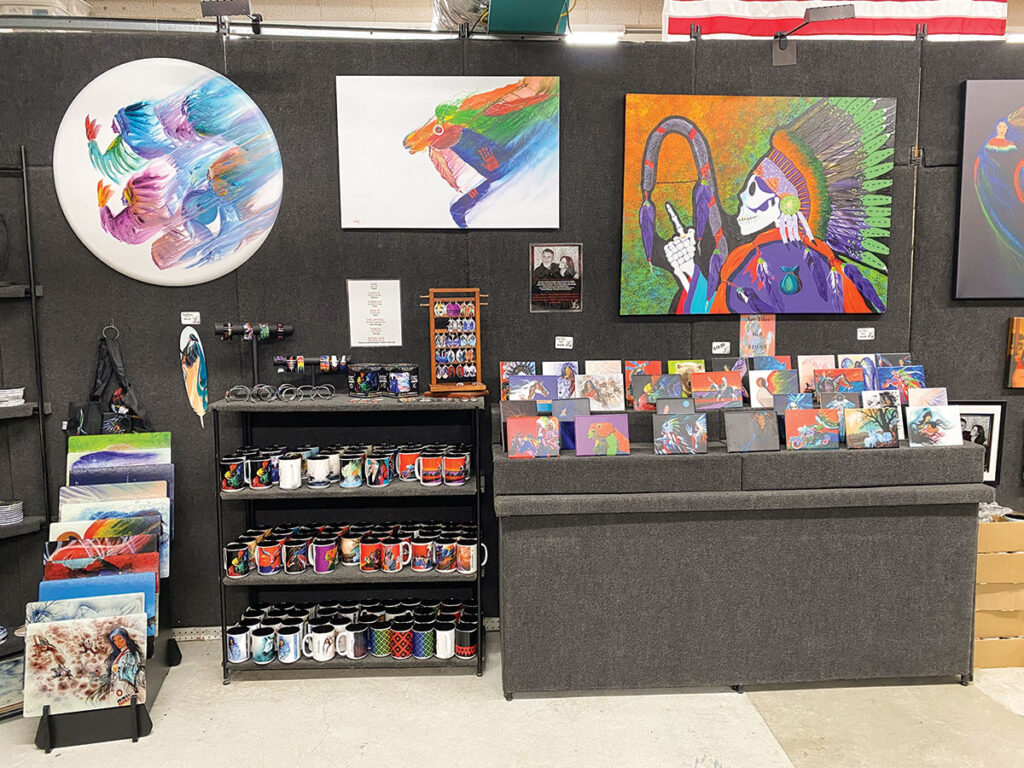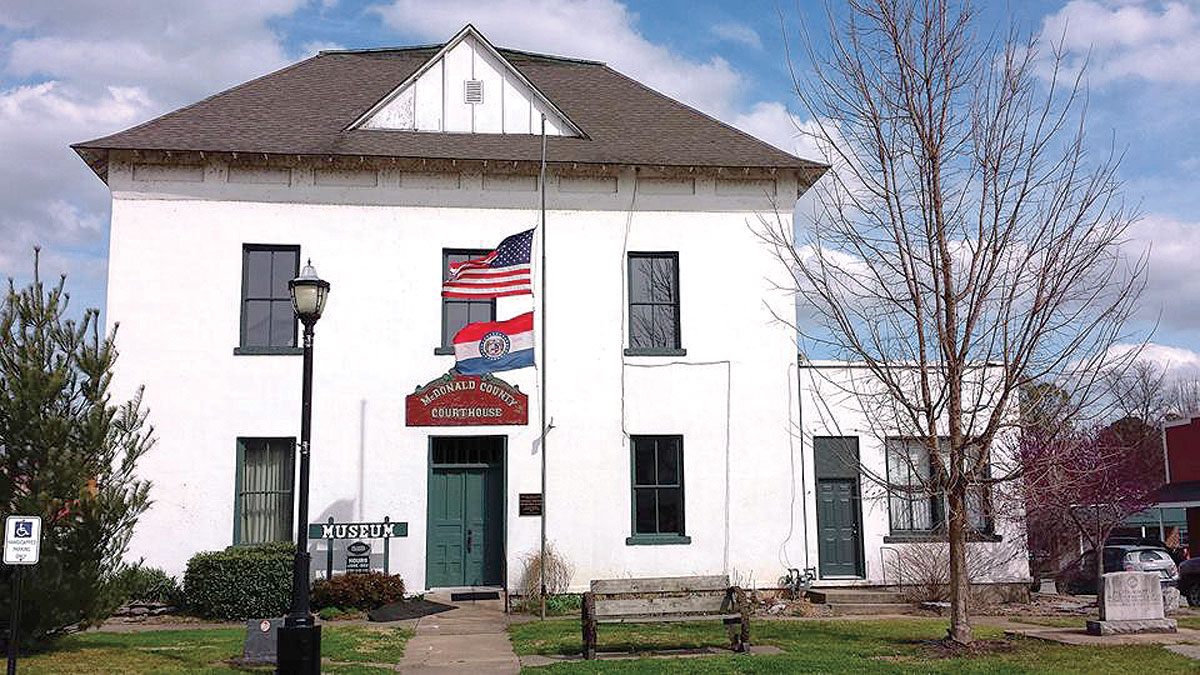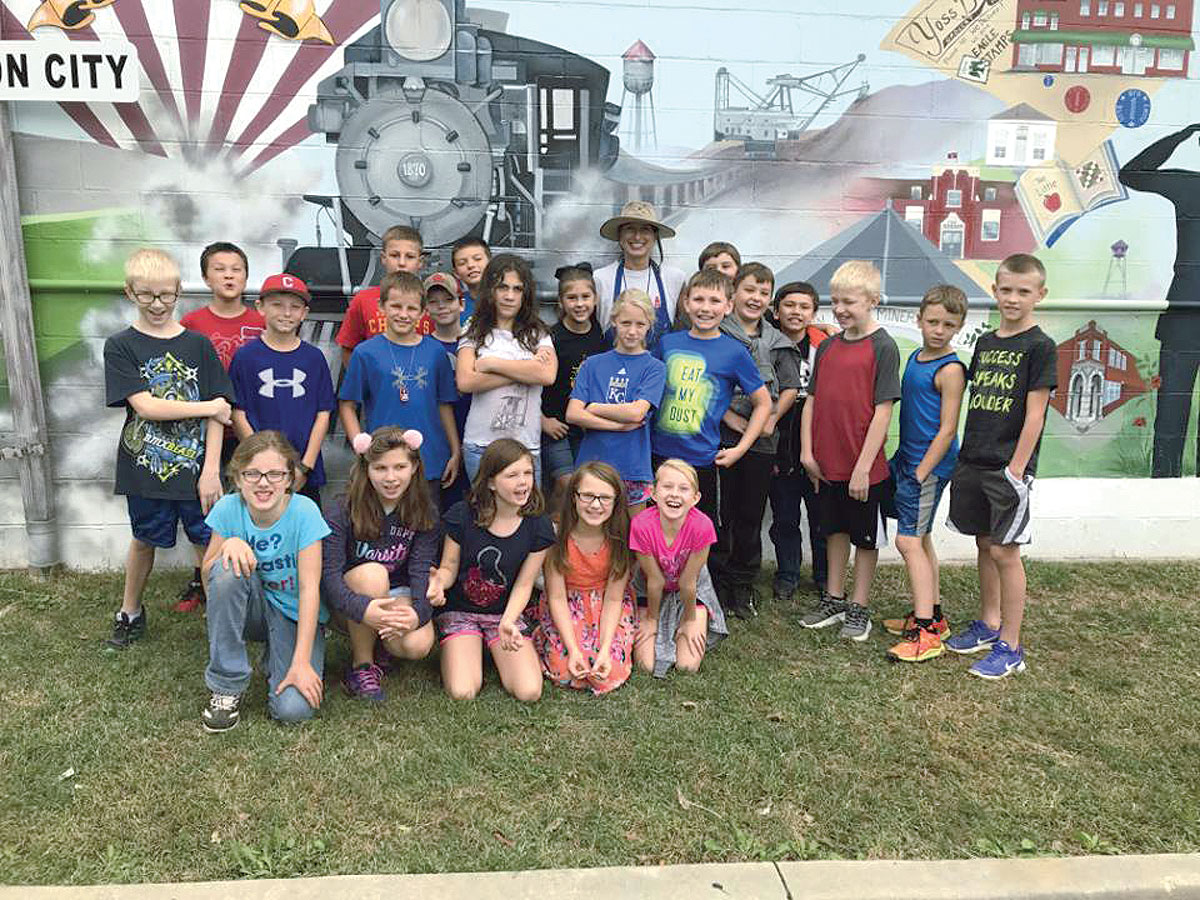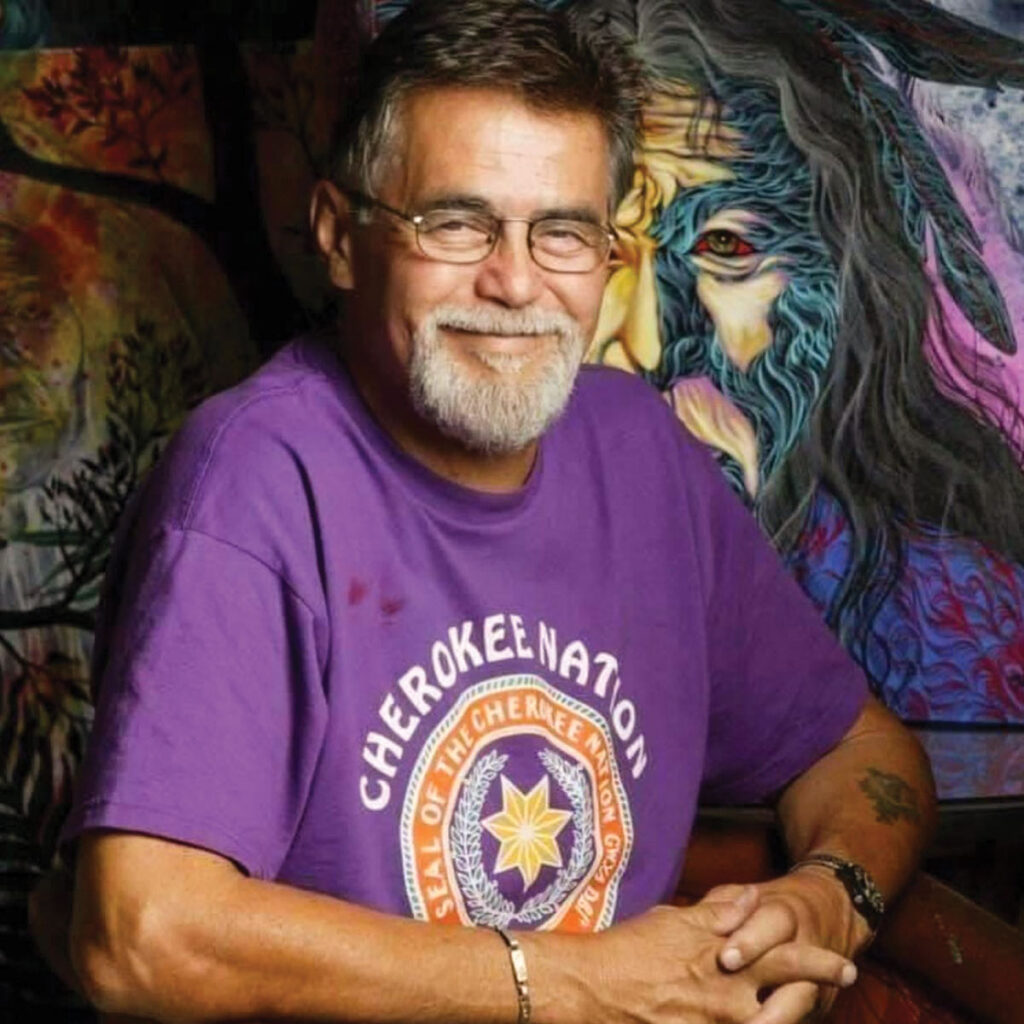
Rabbit Studios honors the talent of the late Bill Rabbit and his daughter Traci Rabbit
PRYOR, OKLA. – There doesn’t seem to be a time Traci Rabbit doesn’t remember her father painting. From her early childhood to his final years, Bill Rabbit seemed to be always creating something.
Traci especially remembers how much pleasure he took in projects focused on Native American cultures.
“I would have to say from watching him paint, he was at maybe his happiest painting the brightly-colored figures of Native Americans, mostly the Plains design,” Traci said. “Plains Tribe imagery, I guess is how maybe you might say that, because growing up in Newcastle (Wy.), that’s what he grew up with the Shoshone, Arapaho, Cheyenne. I would say he enjoyed that style probably the most.”
It’s those paintings and artwork that became the building blocks to the Rabbit Studios, which Bill ran with Traci until his death in 2012.
Rabbit Studios is located in Pryor, Okla. It has been in the same location at 231 S. Taylor for 35 years.
What was once just a studio where Bill and Traci Rabbit worked has transformed into something much more.
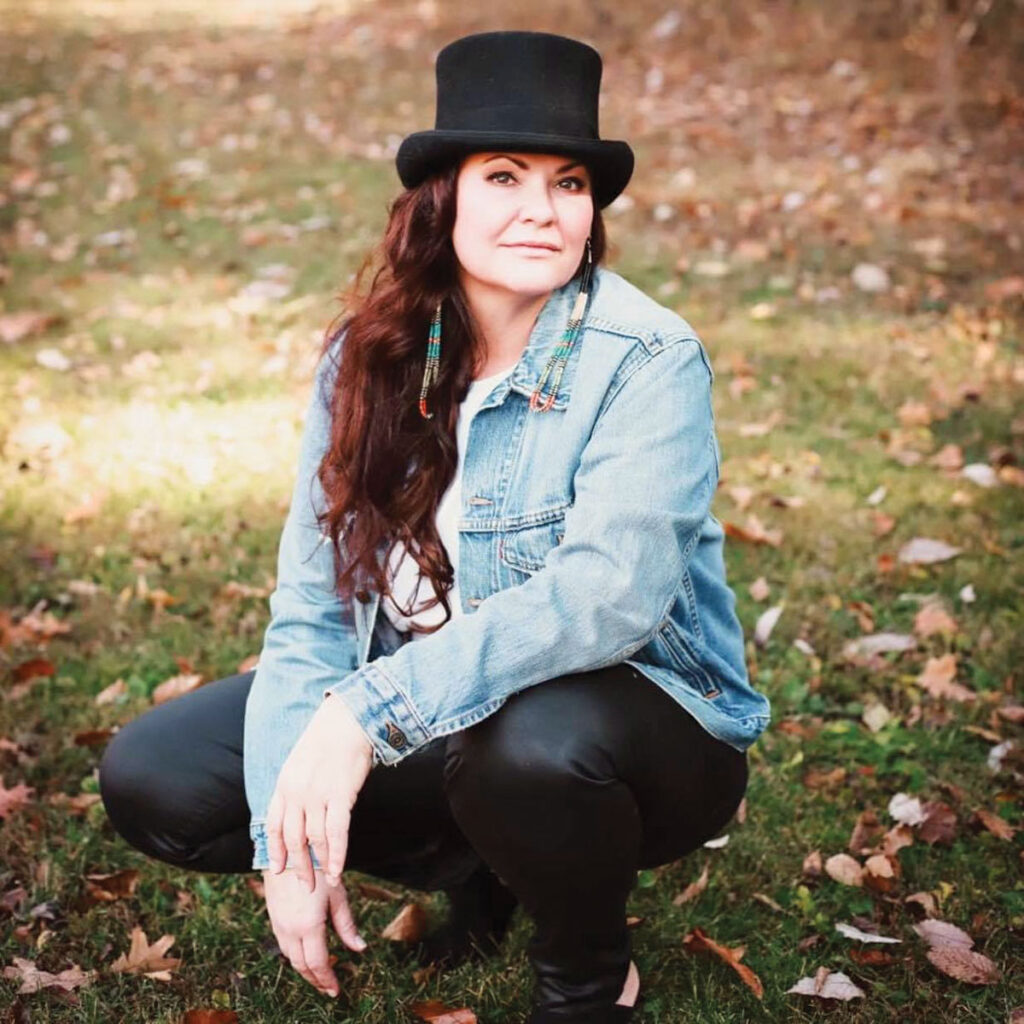
“It is an art studio where we create original art, but we also have a showroom where we have a full line of gift items that we produce here in our studio by my family, which consists of art tiles, coffee mugs, mouse pads, coasters, matted prints, and then I have a whole line of textiles,” Traci said.
Bill’s art career began when he was still a young boy. According to family legend, his artwork was entered into a statewide competition in Colorado. At the age of 4, he won and pocketed $20.
Bill Rabbit continued to teach himself to paint and create artistically. He had earned a full scholarship to the Art Institute in Santa Fe. But he ended up turning it down so he could volunteer to join the military, where he fulfilled two tours in Vietnam.
Bill served for 18 months in the 25th Infantry Division. One of his fellow soldiers was filmmaker Oliver Stone. After he was honorably discharged, he and his wife Karen moved to Pryor and he resumed his art career.
For the next 43 years, Bill created art that spanned the spectrum. While he focused mainly on Native American themes, he also spread into other areas.
“His style is mostly the bright colored things, and he was half Cherokee, but he was raised in Newcastle, Wyoming,” Traci said. “He was initially influenced by Remington, so his style of work really covers the gamut of Native American subject matter from the Plains Indian to Cherokee to the Southwest Pueblo tribe. He just did a variety of subject matter.”
According to Traci, her father’s diverse subject matter is one of the reasons he was able to build a strong following.
“I would say that my dad’s style continually evolved over the years. He was never stagnant in one style. He would learn a new technique and then that evolved into another style. So on, so forth. He was ever-evolving in his style,” Traci said. “Being a self-taught artist, he never had restrictions placed on him telling him what he could do, what he could paint and in what colors. I would say my father was about five artists in one body.”
For Traci, it wasn’t a foregone conclusion growing up that she would be an artist. Even though her artistic talents were discovered at an early age, she wasn’t anxious to follow in her father’s footsteps.
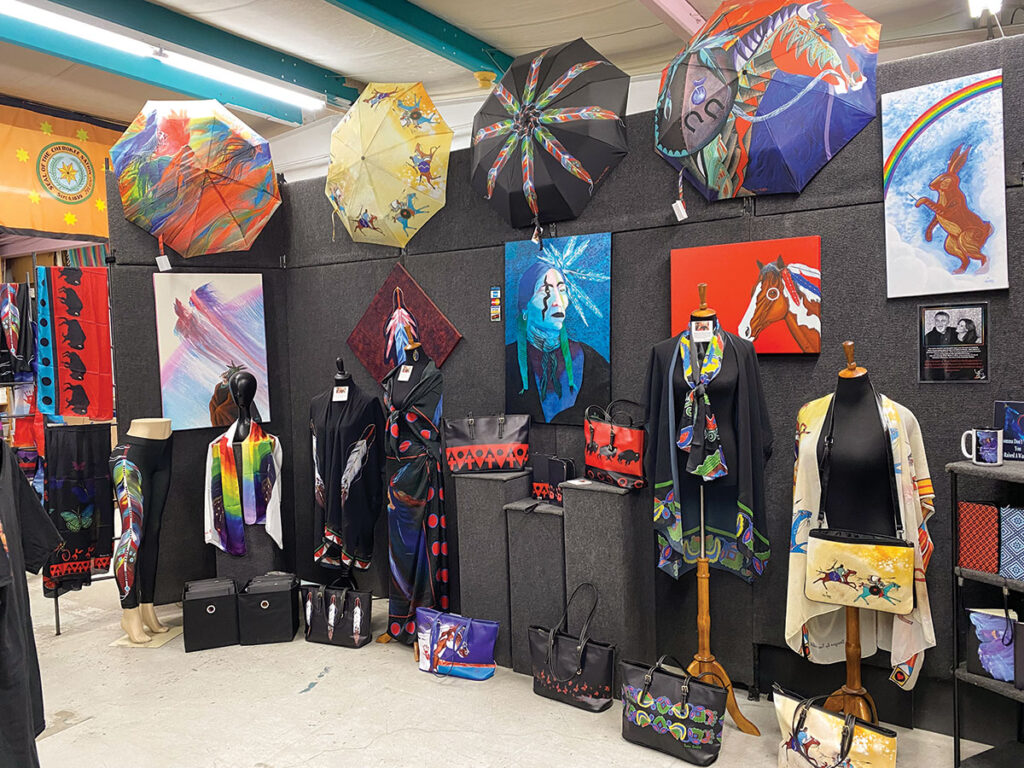
“I enjoyed drawing from an early age, just like my dad, but I never thought of being a full-time artist when I was young,” Traci said. “I think with any child that has a parent who is prolific or well-known in what they do, a child growing up possibly has the in the shadow syndrome, thinking they could never compete in that same arena as their parents. But when you come to find out, as you grow older, you don’t compete with them, you’re able to stand on your own.”
It wasn’t until the 1990s that Traci gave in to the inevitable and decided to make creating art her career.
“It took me a while to figure out that’s what I wanted to do. When I graduated college with a bachelor’s in business administration, when I got out, that business degree served me well in running the business and then doing our own gift line,” Traci said. “In 1993, I decided to jump off the bridge myself and become a full-time artist, and I’ve been doing that ever since.”
Like her father, Traci has focused on Native American subject matters.
“Especially, Native American women showing their strengths and their beauty and everyday life,” Traci said. “That’s really, my main in my work right now, and empowering young women to stand on their own two feet and know that they are of value, and they are important, and they can do anything that they set their mind to.”
Now with more than three decades in the game, Traci finds it hard to pinpoint her favorite piece of art. Like most artists, her pat answer is to say her favorite artwork is the next one.
However, when pushed, it’s really not a contest on which ones Traci values the most.
“I would say the pieces me and my dad did together before he passed, which all of those pieces are owned by the Cherokee Nation in Oklahoma. To me those personify who we are as individuals and who we are as a people,” Traci said. “Indian Summer, Common Value, Common Ground, Land of My Heart and Long Journey.”
Bill passed away in April 2012 at the age of 65. According to his daughter, he died of Agent Orange, which he contracted while serving in Vietnam.
On the Rabbit Studios website, the first content a visitor sees is a video labeled “An Artful Legacy.” Right next to it is a highlighted quote from Bill Rabbit:
“Life has been kind to me. I’m thankful I’ve had the opportunity to see the things I’ve seen and do the things I’ve done. But if I died tomorrow, I would feel so blessed and I hope God puts me in charge of painting rainbows.”
